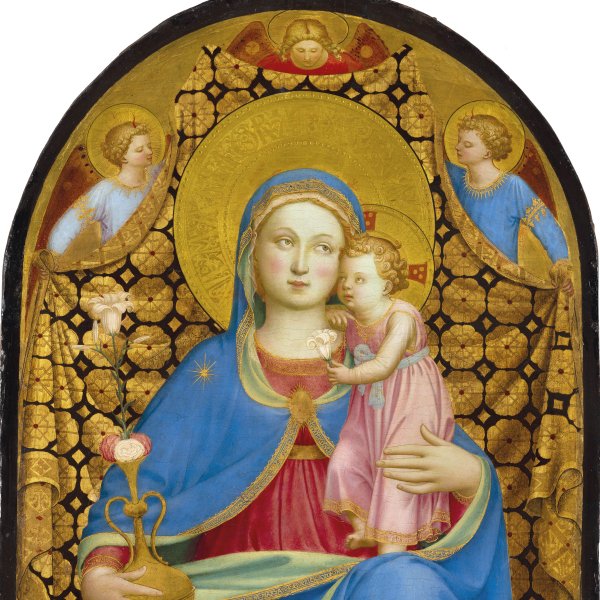Fra Angelico (Fra Giovanni da Fiesole)
Fra Giovanni da Fiesole, a Dominican friar and painter whose name before taking orders was Guido di Piero da Mugello, owed his nickname of “Angelico” to eulogising, 16th-century descriptions of his paintings. The first known reference to his artistic activities dates from 1417 when he executed an altarpiece for the church of Santo Stefano al Ponte. It is known that between 1418 and 1421 he entered the monastery of San Domenico in Fiesole as his name is associated in 1423 with the execution of a crucifix for the hospital of Santa Maria Nuova. Among Fra Angelico’s first works, in addition to his activities as a miniaturist, are the Saint Peter Martyr Triptych and The Virgin and Child (both Museo di San Marco, Florence). They reveal the influence of the late Gothic style of Lorenzo di Monaco, a knowledge of the artistic innovations introduced by Masaccio and Ghiberti, and Brunelleschi’s approach to architecture. By the early 1430s Fra Angelico was an esteemed artist and was considered one of the greatest painters in all of Florence. In 1436 the community of Dominican monks to which he belonged was assigned to the monastery of San Marco in Florence, where the artist is documented in 1441. For this monastery Fra Angelico painted a series of around 50 frescoes to decorate the monks’ cells. He conceived these compositions as devotional aids, and their colouring and composition encourage a mood of reflection and serenity. In the last phase of his career he was summoned to Rome by Pope Nicholas V to decorate one of the chapel in the Vatican in fresco. Executed between 1447 and 1450, this ensemble depicts scenes from the lives of Saint Stephen and Saint Lawrence and reveals a greater emphasis on narrative and detail than the San Marco series. In 1450 the artist returned to his monastery in Fiesole, where he was appointed Prior. Three years later he returned to Rome and on his death there in 1455 was buried in the church of Santa Maria sopra Minerva. Vasari dedicated a chapter in his Lives to the artist in which he emphasised his modesty and humility. Fra Angelico’s style conformed to the didactic requirements of the preaching order to which he belonged, while his images are characterised by their sweetness and grace.





